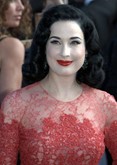In the U.S., between the football playoffs and the Super Bowl, is the Grammys. This award show is dedicated to showcasing and honoring members of the music industry. From Country to Latin to Rap, this award show encompasses a wide range of musical genres and is televised around the world. While it’s the red carpet fashion that first gets everyone’s attention. What the stars and presenters wear to walk the red carpet generates commentary in the news, on talk shows, and by various fashion gurus. Whether it is the gold safety pin dress worn by Miley Cyrus or the . . . interesting tree dress worn by singer Dawn Richard, our understanding of the celebrity experience on the red carpet can be related to our own, and both can be better understood with sociology.

First and foremost, we must acknowledge that for the people who walk it, the Grammy Award’s red carpet is the ultimate example of front stage, a person’s public life that they reveal to the world. The stylized hair, incredibly high heels, low-cut tops, and matching suits are not how these people dress in daily life. If you were to comb the web you would surely find paparazzi photos of them in sweats, T-shirts, and flip-flops as they run errands or sit in the coffee shop with their friends. This less glamorous reality is their back stage, a person’s private world that they choose not to reveal. While the difference between their Grammy Awards front stage and their errand-running backstage is probably starker than what we experience, we also divide our world between what we show others and how we are behind the scenes. Think about it, you probably don’t wear your pajamas to class or work. For most people, that is backstage attire that they wouldn’t dream of showing their professors, classmates, or colleagues.

Whether celebrity or not, people take steps to control how others view them through what the theorist Erving Goffman called impression management. For the average person, this typically involves checking the mirror or asking friends and family members for their opinions on their appearance. Red carpet celebrities don’t rely on the mirror or family members to help curate their look. They rely on stylists, often celebrities in their own right, to make their image and manage the impression others have of them.

Sometimes the red carpet fashion is meant to make a political statement, like Lady Gaga’s meat dress. Other times, it is there to convey a persona, as in the case of the burlesque dancer Dita Von Teese. In both instances, the process of imagining the reaction of others toward oneself, i.e., Cooley’s looking-glass self, is surely at play. A person doesn’t dress in safety pins or like a tree for no reason. They do so because they want a certain reaction from the audience and their peers, social groups consisting of members with common interests, social rank, and similar ages. The audience will buy their records, but their peers are the ones who hire them for their next job or help promote their work to a wider audience. Whether you are talking about the Grammy’s or the Oscars, red carpet fashion is not random. It is very strategic, with a month or more of planning needed to create the look that will convey the image that the celebrity wants to convey.
The red carpet is about dramaturgy in the most public sense of the word. It involves world-class actors (and musicians) dividing their life between front and back stage, and trying to manage what others see or don’t see of them. We all do the same thing, every day, just on smaller stages.
Thompson is a co-owner of UITAC Publishing. UITAC’s mission is to provide high-quality, affordable, and socially responsible online course materials.
Images used in this blog:
- “Paparazzi” by David Shankbone is licensed under CC BY-SA 3.0. This image has not been altered.
- “2003 Technical Grammy award” by zZounds is licensed under CC BY-SA 3.0. This image has not been altered.
- “Dita Von Teese Cannes 2013” by Georges Biard is licensed under CC BY-SA 3.0. This image has not been altered.




